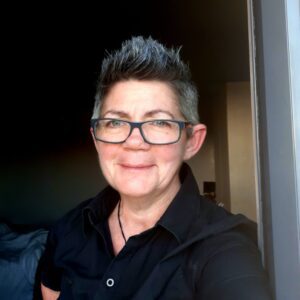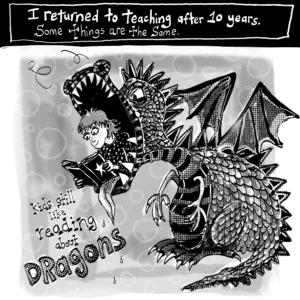



Kia whakatōmuri te haere whakamua
I walk backwards into the future with my eyes fixed on my past
This well-known whakataukī seems like a fitting place to begin a discussion about history and climate change. As early childhood academic Dr Lesley Rameka1 has noted, in Māori perspectives of time, the past, present and future are intertwined. The past is central to, and shapes our present and future identity.
It is now generally accepted that climate change is affecting our weather patterns and will increasingly affect our future. We will all need to learn to adapt to our new, unsettling and constantly changing reality; what Australian climate change educator Dr Blanche Verlie has called “learning to live-with” or “affective adaptation”2.
Like COVID and other large-scale social and health challenges, the climate crisis will impact vulnerable communities more intensely. In 2017, the Royal Society Te Apārangi published a report3 about the health impacts of climate change on children, the elderly, people with disabilities and chronic disease, and low-income groups. The report pointed out that climate change is a particular risk for Māori, given existing inequalities in health, housing and income, and because Māori often live in areas more vulnerable to inundation. The Government’s 2017 Adapting to Climate Change stocktake also identified Māori as among the groups most vulnerable to climate change.
How did we end up here? In order to navigate well into our collective future, we need to clearly understand our past.
Settler colonialism in Aotearoa disrupted the relationships Māori held with the natural world. It brought about the redistribution, renaming, privatisation and pollution of land, water and air, and the redefinition of the value of those things. Planning processes have historically ignored, poorly understood or undervalued mātauranga Māori. Many modern forms of land management, and social and economic policy, have continued to cause ongoing harm.
Researchers are now arguing that te ao Māori perspectives must be integrated into climate adaptation planning in order to assist Māori communities and businesses. In a new Royal Society report published in 20214, Dr Rhys Jones, from the University of Auckland, goes further to argue that solutions to climate change grounded in te ao Māori will improve health and wellbeing for Māori and help reduce inequalities.
In the education space, calls have begun to appear for approaches to pedagogy that are grounded in indigenous knowledge – and in history. Scholars point out that indigenous knowledge systems strengthen our connections with each other and with the natural world, assist students to think holistically, and help build resilience5,6. To walk confidently into the future, students need to understand how we arrived in this place; to develop a critical understanding of the origins of the climate crisis, and the scope and depth of environmental injustice.
To date, climate change education in Aotearoa has been delivered in a piecemeal fashion. (I should note at this point the tensions in using the term “climate change education”. A more accurate way to describe the complexity of what is required, perhaps, is “education for a changing climate and a socially just transition to a zero-carbon future”. However, for the sake of brevity I will use that term here.) All other climate change education still depends very much on the energy of committed educators and their schools, with little provided in the way of professional development, although arguably Te Whāriki provides an excellent initial grounding in connecting tamariki both to the whenua and to te ao Māori.
Educators in this country are now calling for an interdisciplinary approach to delivering climate change education, one that is grounded in mātauranga Māori and integrated into all aspects of the curriculum, at all ages and stages. They look to the emergence and rollout of the Aotearoa New Zealand histories curriculum as a foundation upon which genuinely Tiriti-responsive climate change education can be built. We must know how to engage critically with our histories and understand their impacts in order to walk confidently as kaitiaki into a zero-carbon future.
Very often – perhaps always – change comes from the flaxroots. The Summer 2021 edition of Ako related the story of Ruatōria Primary School kaiako Michelle Haua, who has organised her daily classes to align with the rhythms of Te Maramataka. And in June 2021, a Rotorua school was granted permission from the Ministry of Education to rearrange its school calendar to align with Te Maramataka. These kinds of interventions have the effect of directly connecting tamariki with the rhythms and cycles of their own bodies and of the natural world. Such change supports tamariki Māori to be educated in ways that affirm, validate and nurture them as Māori – creating climate leaders in the process. And when tamariki Māori benefit, all children benefit.
We began with a whakataukī, and it seems fitting to end with one.
Ko te piko o te māhuri, tērā te tupu o te rākau
The way in which the young sapling is nurtured determines how the tree will grow
As always we must seek to build and provide strong foundations for tamariki in order for them all to grow up strongly – something that is ever more important in this climate of ongoing change.
Join our Mātauranga Māui Climate Action for Educators Facebook page to get involved in the climate work of NZEI Te Riu Roa.
Conor Twyford is a Communities Organiser for NZEI Te Riu Roa, where she works with members primarily on climate change issues, as well as a range of other related matters, including disability, Living Wage and other community campaigns. She has spent her life working in the community and union sectors, and is currently undertaking a Masters in Professional Practice, exploring how NZEI Te Riu Roa member leaders’ perspectives on climate activism align with the union’s philosophy of Mōkū Te Ao.
[3] Annette Bolton et al., Human health impacts of climate change for New Zealand. October (2017).
Related Posts

After a decade away from the whiteboard, educator and comic artist Indira Neville has returned to teaching – and she’s drawing about it. In this comic series, Indira shares a glimpse into her days at school, capturing what’s changed, what’s stayed the same and what she never saw coming.

The key obligation for governments is to resource the early childhood care and education sector in order to provide high quality, culturally sustaining provision, since research has reinforced that this serves both individual and societal long-term wellbeing. So why are they not doing this?

While headlines continue to debate the state of education, and political conversations turn increasingly towards blame and constraint, the reality is that our teachers are holding together a system under pressure with the strength of their care, professionalism and deep commitment to every child who walks through the door.

It’s often said that a nation’s budget reflects its values. If that’s true, then Budget 2025 tells us undeniably that children, especially our youngest tamariki, are not a priority.